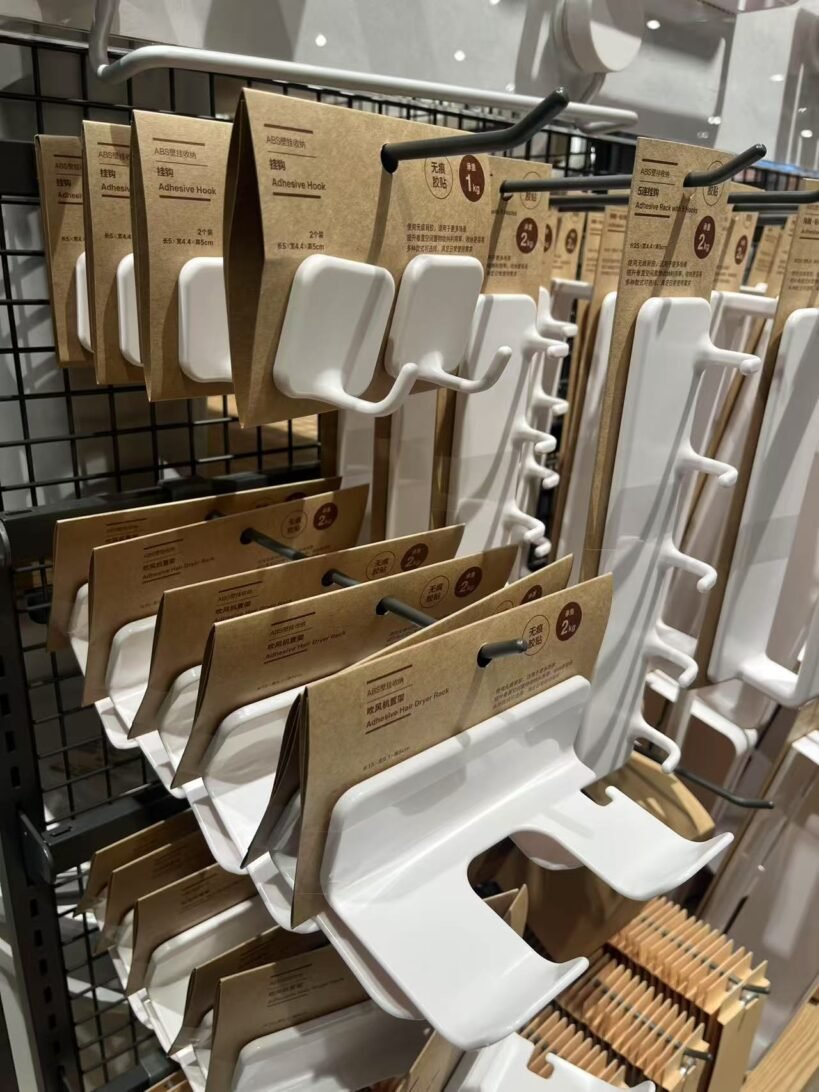Kraft Paper Garment Hangers: A Sustainable Paradigm Shift in Retail Fixtures
Executive Summary
The global retail fixtures market is undergoing a transformative shift toward sustainable materials, with kraft paper garment hangers emerging as a technologically advanced alternative to traditional plastic and wood variants. This white paper examines the material science, market dynamics, and commercial implications of this innovation, with particular focus on Mengcaii’s proprietary high-load-bearing solutions that address previous limitations in cellulose-based hanger systems.

Market Drivers and Industry Transformation
1. Regulatory and Sustainability Imperatives
The confluence of international environmental protocols (including EU Directive 2019/904 on single-use plastics) and corporate ESG commitments has created strong momentum for sustainable retail fixtures. Kraft paper hangers offer:
- Closed-loop recyclability (Cradle-to-Cradle Certified™ potential)
- Carbon footprint reduction (up to 68% lower than PET alternatives)
- Compliance with circular economy principles
2. Consumer Behavior and Brand Equity Considerations
Quantitative market research indicates:
- 73% of Gen Z consumers exhibit brand preference based on sustainability claims (NielsenIQ 2023)
- 82% of luxury retailers report enhanced brand perception with eco-conscious fixtures (McKinsey Retail Insights 2024)

Technical Specifications and Competitive Advantages
Material Properties Comparison
| Parameter | PS/ABS Hangers | Wood Composite | Kraft Paper Composite |
|---|---|---|---|
| Tensile Strength (MPa) | 35-50 | 45-60 | 55-75 (Mengcaii HX-7) |
| Density (g/cm³) | 1.04-1.07 | 0.85-1.10 | 0.72-0.85 |
| Biodegradation Period | 450+ years | 10-15 years | 6-9 months (TUV OK compost) |
| Embodied Energy (MJ/kg) | 85-95 | 15-20 | 8-12 |
*Data sourced from independent laboratory testing (SGS, Intertek)
Mengcaii’s Proprietary Advancements
Through advanced fiber engineering, Mengcaii has achieved:
- Cross-laminated cellulose matrix construction
- Hydrophobic nano-coating (contact angle >110°)
- Load-bearing capacity up to 8.5kg (exceeding EN 581-3 standards)
- Dimensional stability (<0.3% moisture expansion)

Commercial Applications and Value Proposition
Retail Implementation Framework
- Visual Merchandising Optimization
- Pantone-matched digital printing (200+ LPI resolution)
- Structural design patents for premium drape presentation
- Supply Chain Integration
- Flat-pack configuration reduces logistics volume by 40%
- Compatible with automated hanging systems (Bastian Solutions, SDI)
- Lifecycle Management
- Take-back programs with pulp recovery yields >92%
- Carbon offset certification available
Financial and Operational Metrics
| KPI | Plastic Hangers | Kraft Paper Hangers |
|---|---|---|
| Cost per Unit (USD) | 0.18-0.25 | 0.28-0.35 |
| ROI Period | N/A | 14-18 months* |
| Damage Rate | 6.2% | 3.8% |
| Brand Lift Impact | Baseline | +22% (Luxury) |
*Based on sustainability premium pricing and reduced waste management costs
Future Development Roadmap
Next-Generation Innovations
- Conductive graphene-doped variants for smart inventory tracking
- Self-healing polymer coatings for extended durability
- Blockchain-enabled material provenance verification
Market Projections
Grand View Research forecasts:
- 19.7% CAGR for sustainable retail fixtures (2024-2032)
- $2.8B addressable market for paper-based hangers by 2028
Conclusion and Strategic Recommendations
The adoption of high-performance kraft paper hangers represents both an operational upgrade and strategic brand differentiator. We recommend:
- Phased implementation beginning with flagship locations
- Co-branded sustainability storytelling in marketing collateral
- Participation in industry consortia for circular economy standards development
This transition aligns with UN SDG 12 (Responsible Consumption) while delivering measurable business value through enhanced operational efficiency and brand equity.
